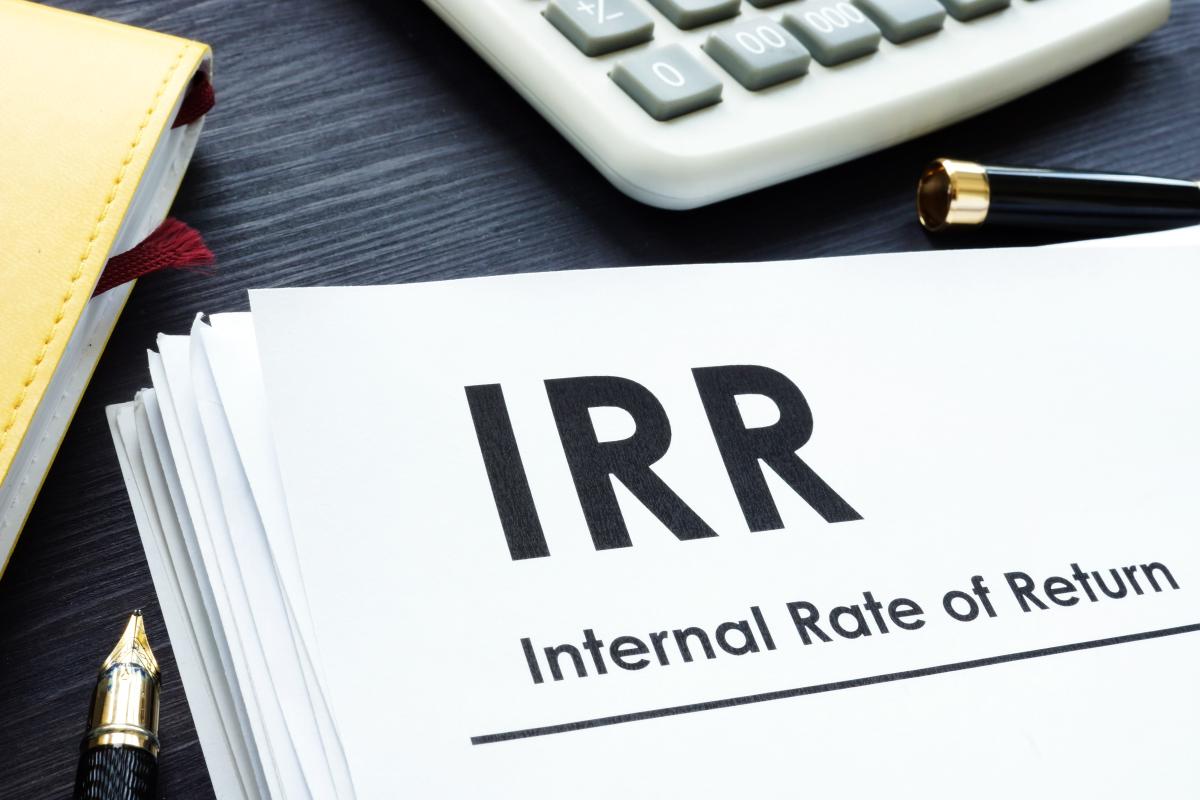By George Aliferis, CAIA, CEO of Orama a video and audio marketing agency specializing in fintech and the content creator behind InvestOrama, a content platform that explores the future of investing across alternative assets, Defi and technology - but without the hype.
I was on the seafront with my kids over the weekend, and we stopped by a street magician who called them as assistants. It was lowball magic, and my younger son spotted a trick and started yelling “IT’S IN HIS POCKET!”. He was genuinely excited about it (he’s 4) and I couldn’t shut him up. It was a slightly embarrassing moment, which I paid for with a bigger-than-planned tip. The magician was an amateur but he had a card reader.

The magic of IRR compounding: from Tony Robbins to Yale
12 February 2024: Tony Robbins on CNBC:
“If you had a million bucks and you put it aside in the S&P 35 years ago, forgot about it. It's worth 26 million.
Take the same million, same 35 years put in private equity, the average private equity fund. It's $139 million.”
It’s the power of compounding in full force and he states that the compounding rate was 9.2% for the S&P 500 and 14.2% for the average private equity fund.
A quick search will confirm those levels:
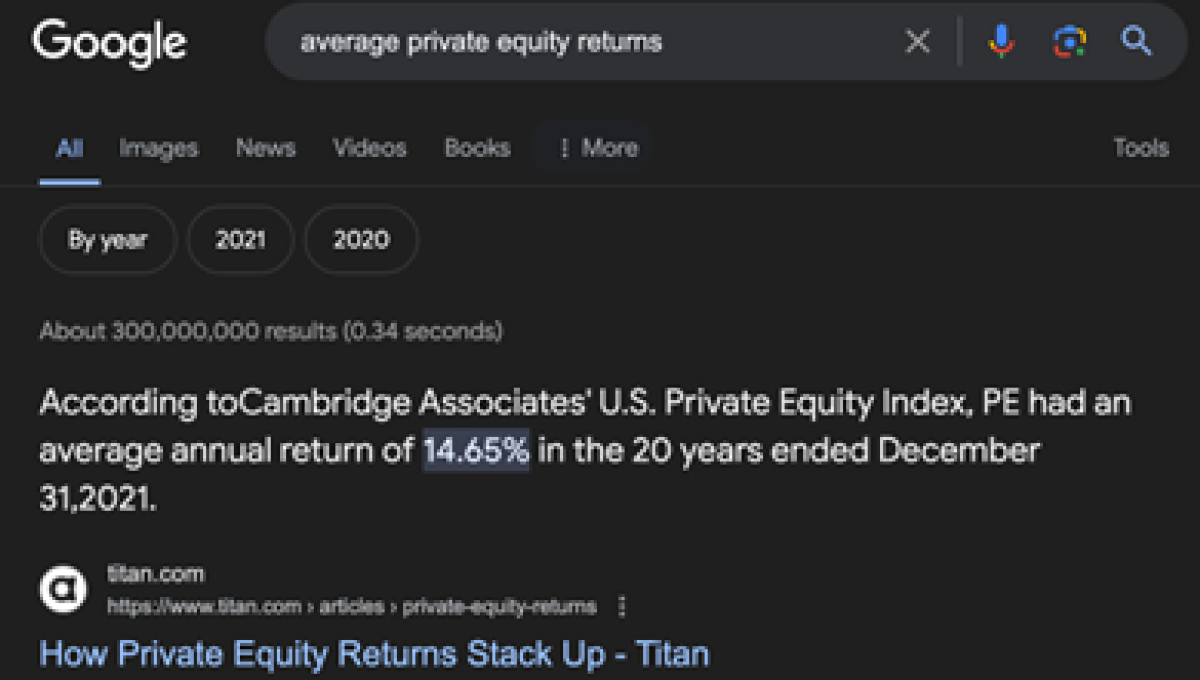
Compounding based on Tony’s figures
You can find all the calculation in this article in this spreadsheet.
With his numbers (9.2% and 14.2%) I get $22M and $104M, not 26 and 139. But it was live TV so we can make allowances.
If you change the years from 35 to 37 you get pretty close, so we will take it as a valid point: 5% more per annum will have a dramatic impact after 35 years.
He’s talking about the “average” not the “Masters” who are “producing 20% compounded for decades.”
And if you check KKR, one of those “Masters”, you can confirm Tony’s revelations. It’s averaged returns of 26% over 48 years.
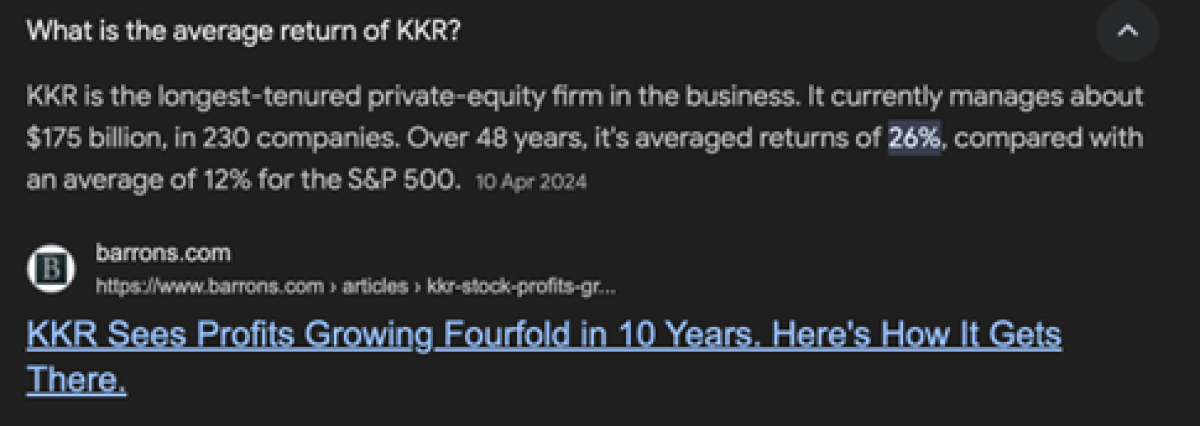
Compounding based on Tony’s figures
With the same compounding calculations ($1 million; 26%; 48 years), the result is $65,733,410,488.54, rounded up for clarity: $66 Billion!
Two years after its launch KKR was managing $30 million, at this compounding rate, 46 years later becomes $1.2 trillion.
If we look at the website of another industry titan, Apollo, the figure is even more impressive: 39%!
If we look closer, we can see it’s a gross figure.

And so was KKR’s. We don’t have KKR’s net figure but we have Apollo’s: 24%. Still fantastic if you can compound it!
Now if we look back at KKR even closer we notice:
- The numbers correspond to a Gross IRR - Internal Rate of Return.
- The Assets Under Management are impressive ($176B) but nowhere near the trillion that implied by compounding the rate based on the initial investment assuming it’s all reinvested - and they have raised a LOT more funds since the initial $30M
Compounding based on the Yale Endowment’s figures
Here’s a screenshot from the Yale Endowment. The Endowment is much more than a large investor - it’s a model (the “Yale Model” or “Endowment Model”) characterized by its diversification across asset classes, including a large allocation to Private Equity.
You can read “Returns”, and “Since Inception”, but not IRR.
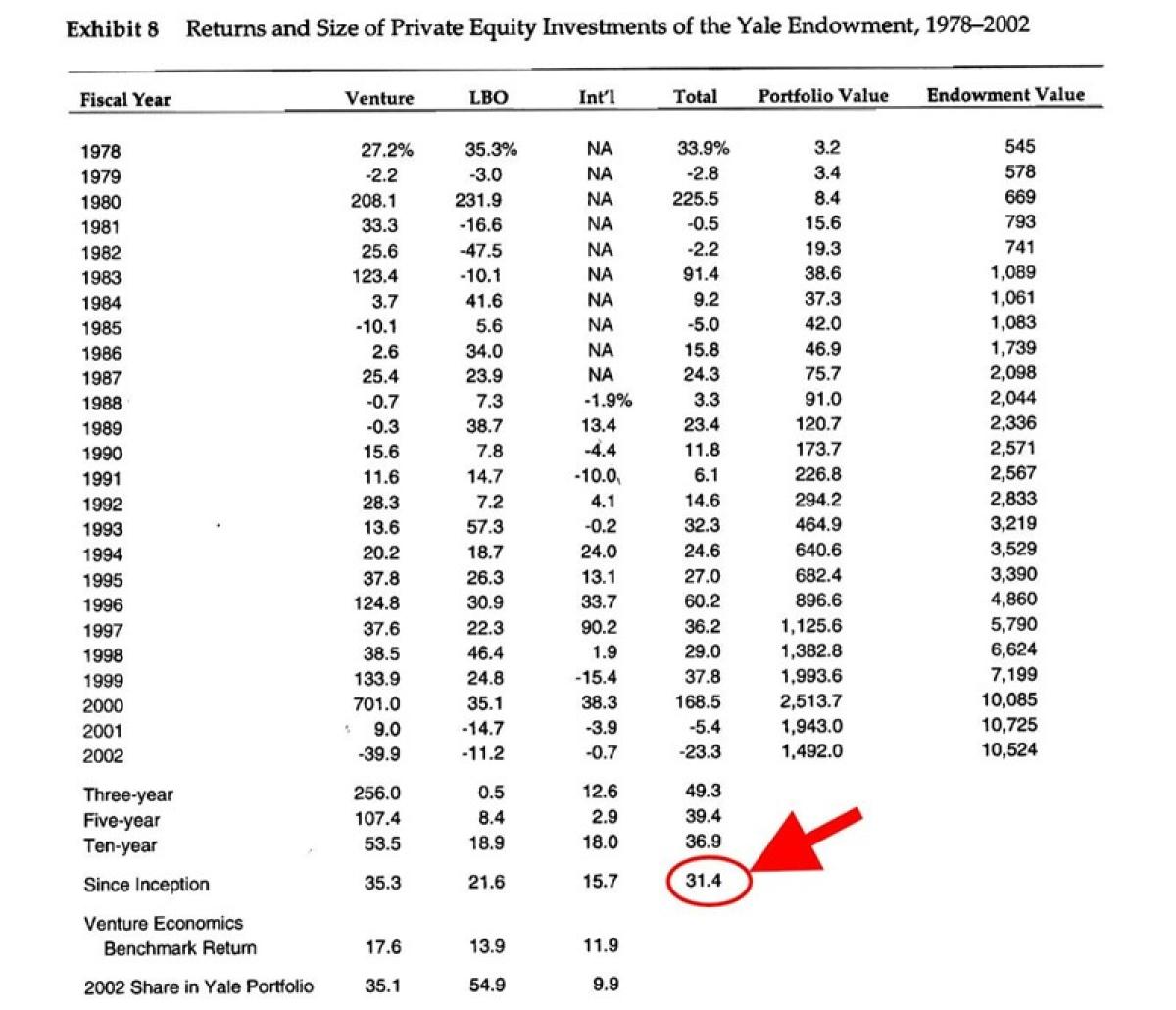
It’s easy to think that it means “Returns since inception 31.4%” or 31.4% per annum on average - although we know it’s based on IRR.
It would imply that $1.1m invested in 1978 became $1 Trillion in 2002. Magic!
The endowment would have solved the University’s funding challenges for generations to come.
But we know that in 2023 the endowment manages about $40B (and it lost money 2 years in a row for the first time). You can read further about this in this article from Ludovic Phalippou , a professor at Oxford and recent podcast guest.
Just like with our seafront magician, it’s not a huge reveal.
All these figures were based on the IRR (Internal Rate of Return).
If there are no intermediary flows, the IRR is the same as the rate of return or CAGR (Compound Annual Growth Rate), but in all other cases the IRR can’t be compounded.
KKR didn’t return a trillion net of fees to early investors.
Yale did not solve its funding problems forever.
Tony Robbins is WRONG when he says the average PE fund would have returned $139M.
But apart from Tony nobody said you can compound it!
So what is the IRR?
The IRR is the discount rate that makes the net present value (NPV) of a project zero. In other words, it is the expected compound annual rate of return that will be earned on a project or investment.
Although the definition is fairly intuitive, it’s not something you can calculate with a pen and paper. You’ll need a spreadsheet because it’s an iterative process (more details).
The enduring magic power of the IRR
Tony Robbins made a mistake by compounding the IRR. It happens. He’s not a finance professional anyway. He’s pitching his newbook which is itself a pitch for a PE play.

Professional investors are not that easily fooled. A seasonsed LP told me “They have to show the IRR because LPs ask for it, but largely only use MOIC, TVPI, and DPI from a performance reporting perspective.”
And a fact-checking reporter should have said something like:
“Tony, you are wrong this is not how compounding works”
Instead the CNBC anchorman asked:
“But is it accessible?”
The problem with the IRR is that MOST people don’t get it. And I have a confession to make, that includes me.
I got a basic Twitter poll about IRR wrong:
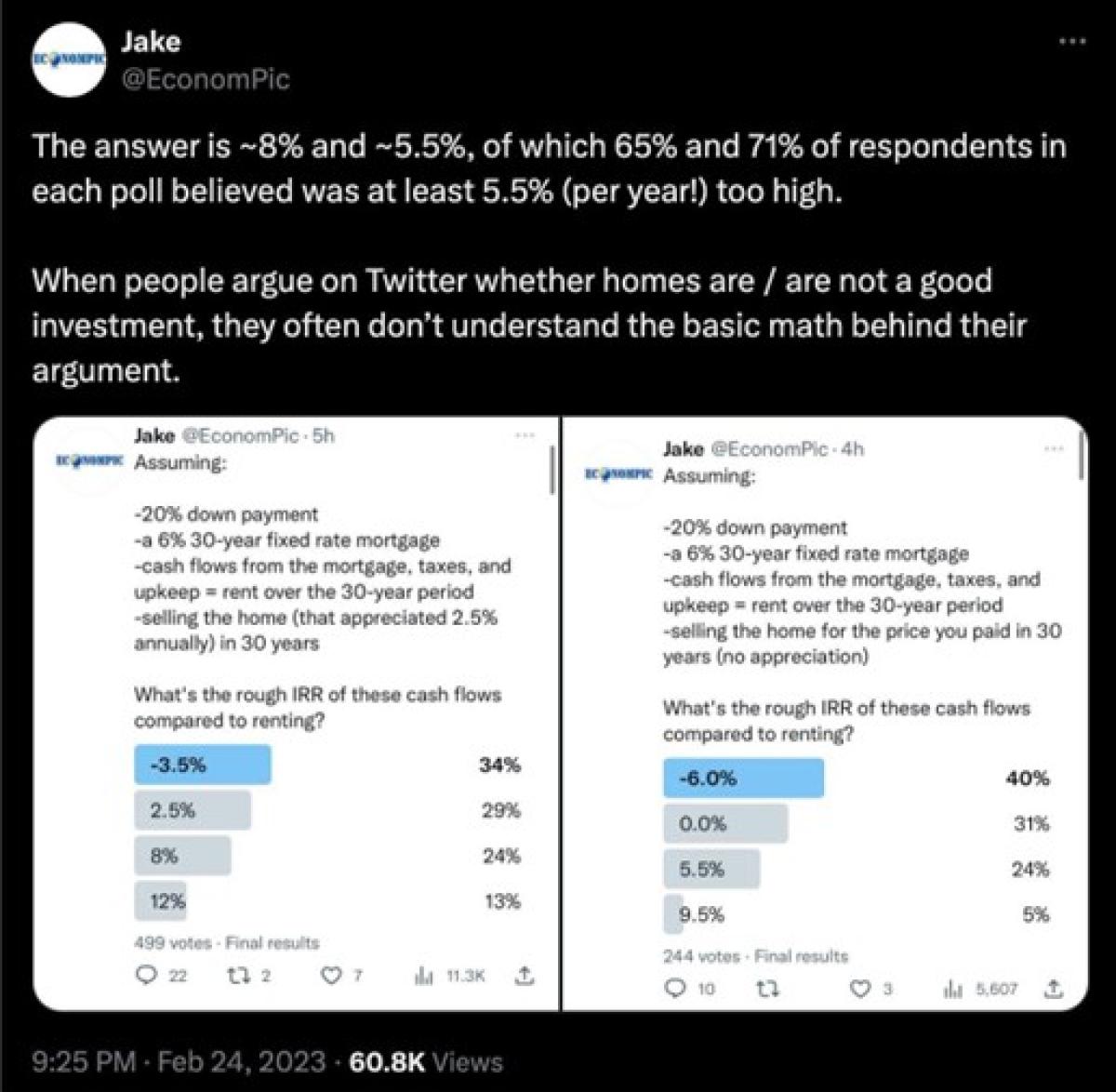
And I did it in plain sight:
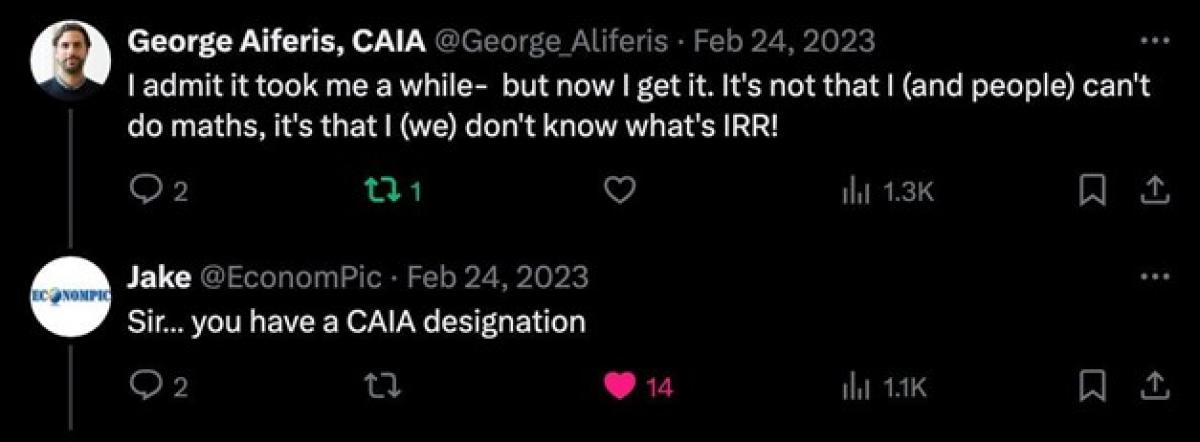
Sorry CAIA…
But I was not the only one, 74% got it wrong and it’s an account followed mainly by financial professionals.
McKinsey found a similar percentage (80%) of “executives at corporations, hedge funds, and venture capital firms, were not aware of IRR’s most critical deficiencies”.
To recap, IRR is:
- Not a rate of return
- Not straightforward, most people (including finance professionals and executives) don’t ‘get it’
Now it’s time for some actual calculations.
It’s easy with a spreadsheet, I’ve made one here. And I will walk you through 4 oversimplified examples.
- Think of them as funds you could invest in (the names are fictional but they’re here to make the experience more immersive)
- They are 10-year investments, although it starts at Year 0: If it’s a 2-year bond, you invest (in Y0) then get a coupon in Y1 and coupon + principal in Y2
- We calculate the IRR, the Net Flows (inflows+outflow for the investor) and Total Value to Paid In (TPVI: all inflows/outflows)
- For the sake of simplicity, there are no fees
Example 1:
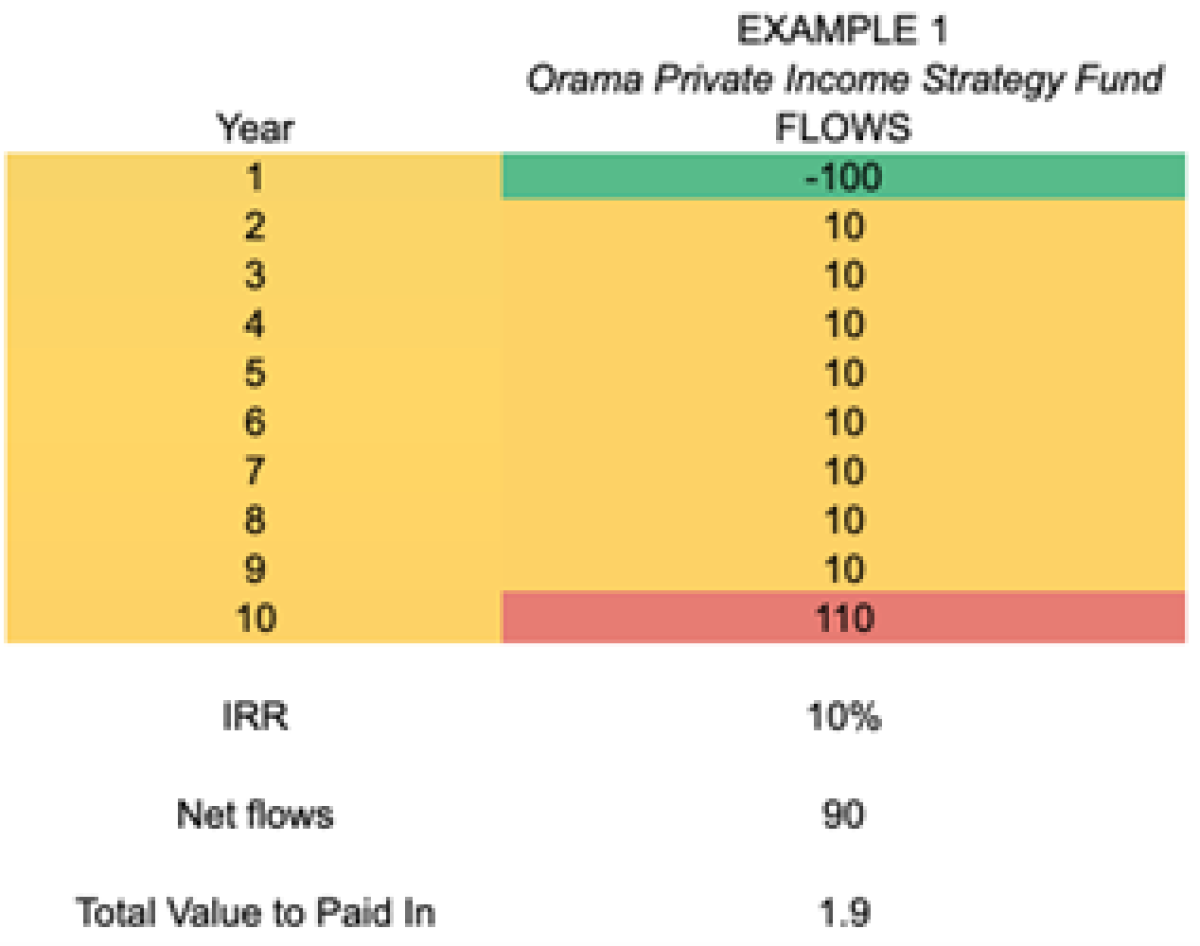
Our “fund” is a 10-year, 10% bond and its IRR is 10%. Phew! That was intuitive.
Example 2:
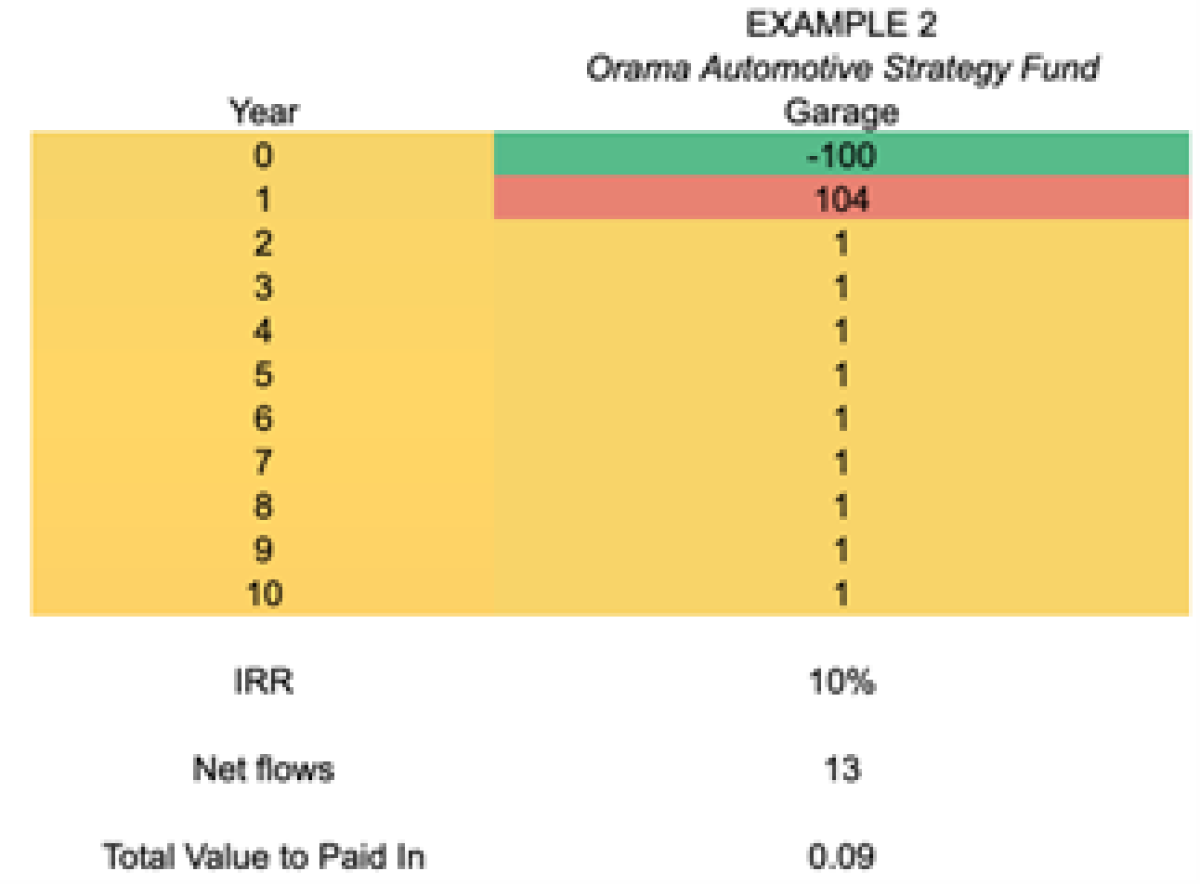
Our Automotive Fund is a car dealer/garage: Buy a new car in year 0, sell it with a 4% markup in Y1 and then service the car annually for a fee of 1.
The IRR is the same as in Example 1. The overall flows are much smaller. But we do get the money early.
Example 3:
A payoff that looks a bit more like a private equity life cycle, where investors will initially commit (100), and payments are “called in” the first few years.
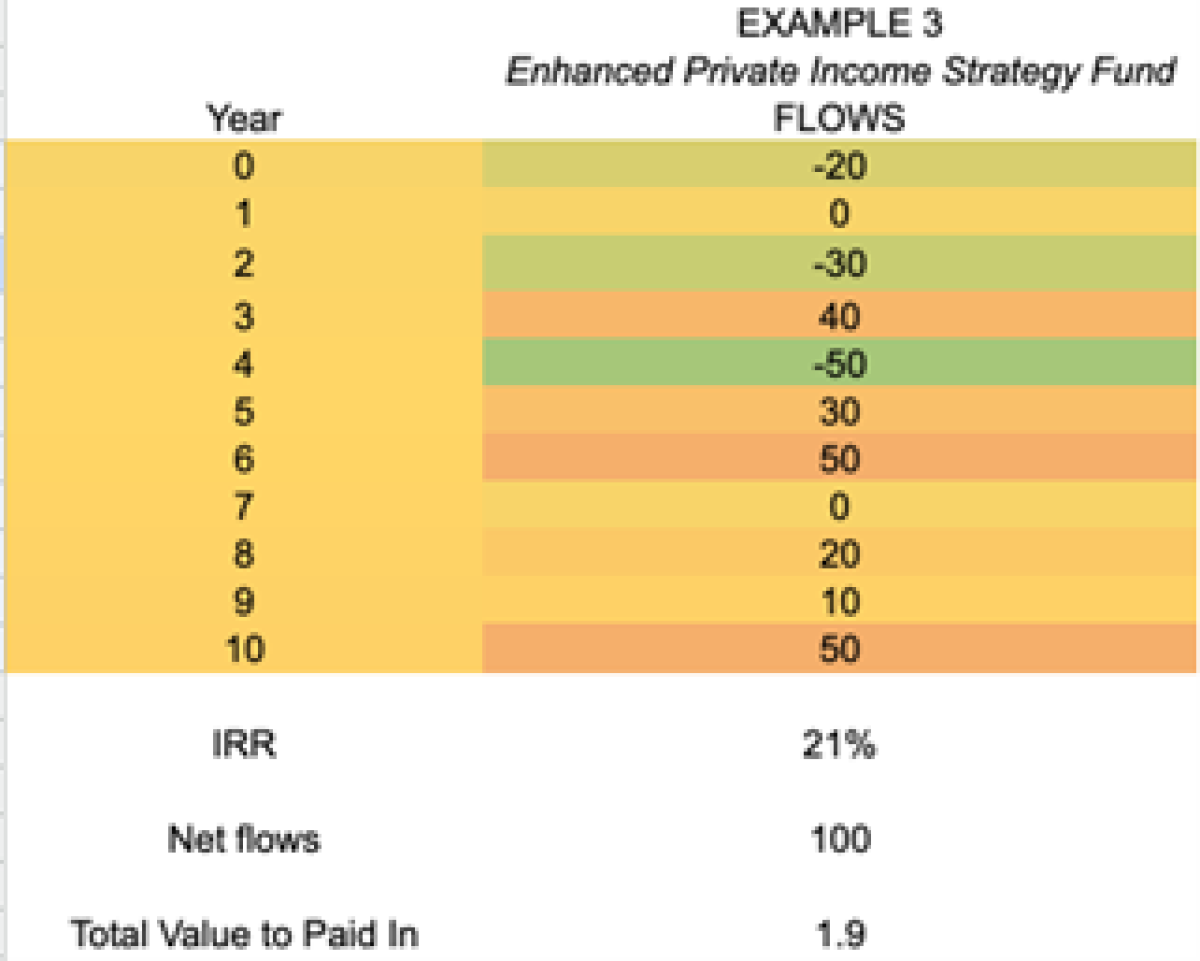
Here we achieve an IRR of 21%, twice as much as in Example 1, but the net flows are the same.
To be extra clear:
- At an annual return of 10% for 10Y, 100 would become 259
- At an annual return of 21% for 10Y, 100 would become 668
These examples show the IRR
- Doesn’t provide much information on the flows that occured before it was calculated
- Is not a way to assess how much investors made
They were based on simple inflows from investor and outflows from the risky asset. In practice, GPs can also borrow money through SLCs (Subscription Lines of Credit). SLCs are a senior secured revolving credit facility secured by the investors’ uncalled capital commitments and they can be used to affect the flows and manipulate the IRR.
Example 4: based on Yale’s figures
You may have noticed in the example above that the early flows have an outsized impact. It also stays.
Here’s a calculation using the figures from Yale with a hypothetical initial first flow of -150 to match the 31% IRR in year 25 that they report.
At the bottom, after year 25 you’ll see hypothetical flows (yellow) that look bad (-100 every year)
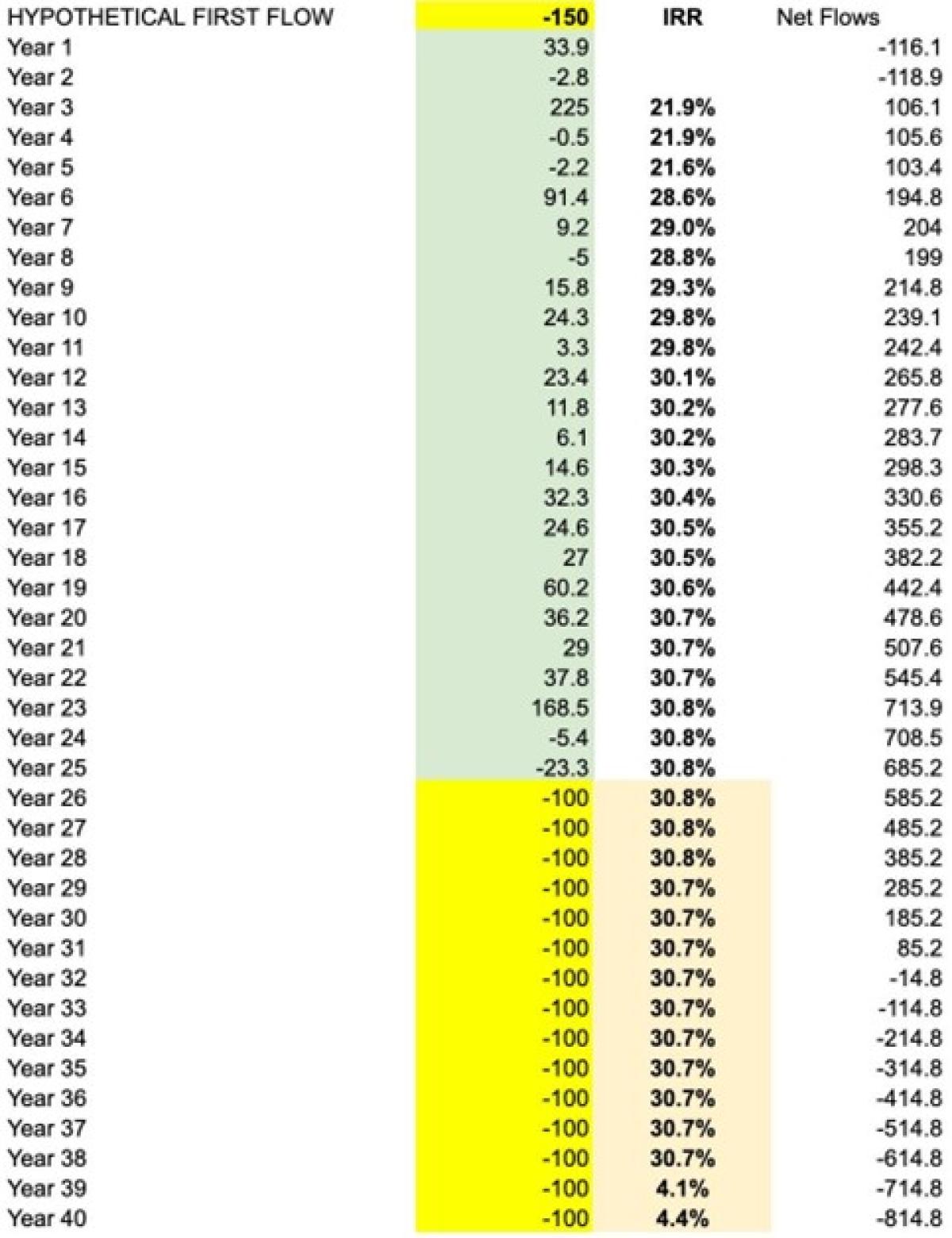
Such is the nature of IRR that it takes 13 years to correct significantly.
This explains why Apollo, KKR and others can publish consistently high IRR figures - because they are not affected by the most recent ones.
The IRR does not provide information on how much the investors (LPs) actually made. It’s also not a good way to understand a GP’s track record.
IRR & the Democratization of Private Equity
If Private Equity (PE) matters, then IRR matters.
Because the IRR is the default performance benchmark for the industry.
And Private Equity matters because it becomes “democratized”, i.e. accessible to individual investors.
We saw examples from KKR, Apollo. Here’s Blackstone latest launch (BCPE):
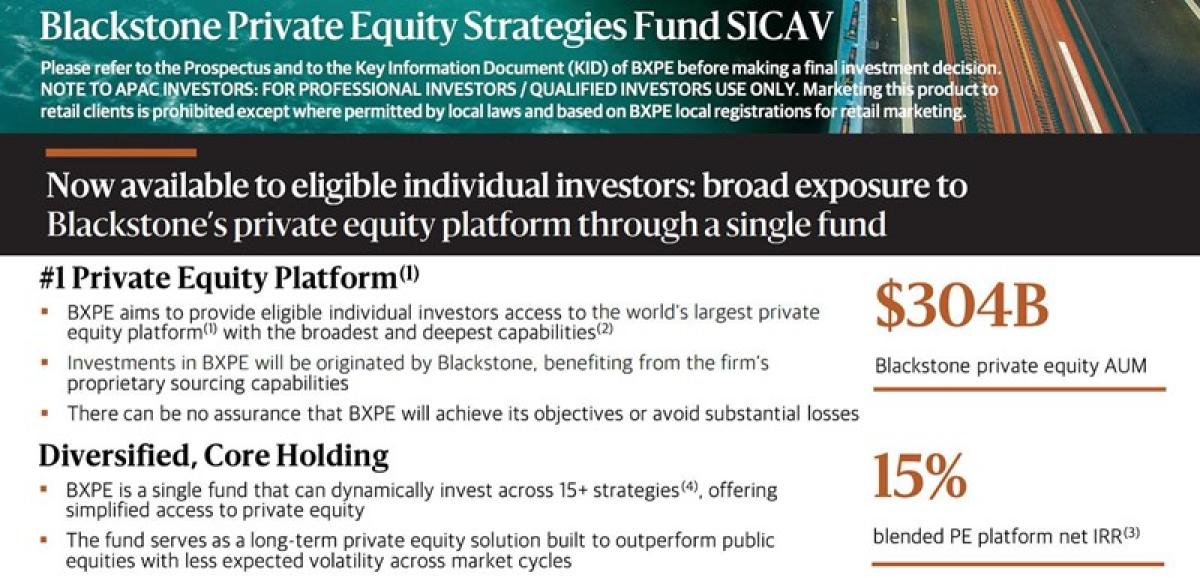
It is targeted to eligible individual investors

We discussed how the IRR is:
- Not a rate of return
- Not straightforward, most people (including finance professionals and executives) don’t get it
- Not a good indication of previous flows, or how much investors made in the past
- Easily manipulated (for example with SLCs)
- Not a good indication of the long-term track record of a PE firm
So, If the figure is so confusing, why is it so widely used?
- It looks good
You may have noticed a pattern in the IRRs from the sample from Private Equity firms quotes here: 39%, 15%, 26%
DOUBLE DIGITS! And since inception! I’m yet to see an IRR figure from a PE firm that is single digits.
If we know it’s meaningless, double digits still give us a nice, warm feeling.
But for those who don’t know it’s meaningless (like Tony Robbins), the nearest thing to “Internal Rate of Return” is “Rate of Return” - something you can compound.
- It stays good
PE firms will forever report double-digit IRRs, because of the inertia mentioned above.
- Confusion is good (for vendors)
I’ve received a transcript of a conversation between a PE sales and a prospect. The salesperson explicitly applies the Since-Inception-IRR of a fund as if it were a rate of return for a given year. [Edited for clarity and anonymity]
SALES: Actually, if you look, and this is through the end of the third quarter, the return of fund nine itself was up 24% for the year. So, for 2022, for the first three quarters, our vintage fund nine, was up 23% when the S&P, as we all know, was down 25%.
SALES: I'm taking notes here. I'm taking notes. One second. So, this is fund nine in 2022, a 100$ goes to 123$
CLIENT: And the S&P, it goes to $75. That's pretty good. So, you and that, and that's that. Okay. You, so that, that's, that's what happened in 20, in 2022, correct?
SALES: Correct.
If you look, and this is through the end of the third quarter, the return of fund nine itself was up 24% for the year. So, for 2022, for the first three quarters, our vintage fund nine, excuse me, was up 23% when the S&P, as we all know, was down 25%.
CLIENT: One second. I'm taking notes here. Tell me again. So, in 2022, your vintage nine, which is on the right side of this page.
SALES: Was up 23% for the year while the S&P was down 25%.
CLIENT: Wow. And that's, that's the IRR, yours is the 22% IRR, correct?
SALES: Right. That was the actual return. That's your return profile. So, 23% for the first three quarters of 2022.
CLIENT: Okay. So that means if someone had a hundred dollars in January, they'd have $123 with you, but they don't, but they'd have 75 with the market.
SALES: Correct.
Incorrect? Sure. Outrageous? Maybe. But it’s no different than Tony Robbins’s claims on CNBC.
And what’s worse, both Tony and the sales may not know they are wrong. They may simply be confused by the IRR - like everyone else.
It’s bad form to heckle a street magician, but it’s ok to reveal the tricks of giant private equity firms that affect billions of dollars of flows.
When the IRR was exclusively used for marketing to professionals, it was fair play as large buy-side institutions should conduct their due diligence and they may combine it with other metrics (MOIC, TPVI, DPI, etc.) in a savant mix.
If it wasn’t named IRR, if it didn’t include the word “Return”, and it was called “the discount rate that makes the net present value of a project zero”. Would it be so commonly used?
When included for communication with individual investors, the IRR has no reason to be used except for preying on investor’s confusion.
Two conversations about Private Equity, one with Professor Ludovic Phalippou (Oxford University), the other with Trym Riksen, a consultant at Gabler inspired this article - you can listen to them here.
About the Author:
George Aliferis, CAIA is the CEO of Orama a video and audio marketing agency specializing in fintech, and the content creator behind InvestOrama, a content platform that explores the future of investing across alternative assets, Defi and technology - but without the hype. Previously, George worked as a front-office professional for over a decade across derivatives, ETFs, and alternative investment products in Paris, Singapore, and London. He holds a Master's Degree from HEC Paris.





